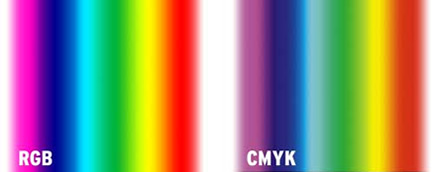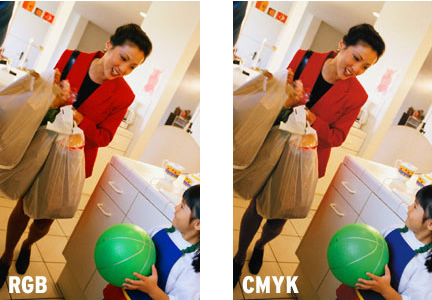CMYK and RGB are two different color models, and understanding the difference can mean producing a great-looking insert rather than a muddy, disappointing one.
We’ll have to delve into a little science to explain this difference.
The RGB color model is used by monitors, televisions, scanners, and digital cameras. A monitor uses very small bands of red, green, and blue light to generate color. For a quick science project, put a drop of water on the front of your monitor in a white area, and it will act like a magnifying glass. You’ll be able to see the red, green, and blue bands. RGB is additive because when you add all three colors together, you get white light; when you turn off all three lights, you get black. By mixing varying amounts of red, green, and blue light, you can create most other colors.
The paper of a magazine, catalog, or CD booklet can’t generate light like a computer monitor. It has to rely on reflected light, and the subtractive color model CMYK. When you add cyan, magenta, and yellow together (CMY), you get a color close to black, and when you don’t lay down any ink, you get white—that is, the white of the paper. A fourth color, black, is added for economical and practical reasons, and is referred to by ‘K’ so as not to be confused with blue. By mixing varying amounts of cyan, magenta, yellow, and black inks, you can create most other colors. All commercial, full-color printing uses CMYK inks.
So why is the difference important? Most colors created on your RGB monitor can be duplicated using CMYK inks, but not all. Your RGB monitor is generating light, so it can create some bright colors that can’t be duplicated on any CMYK printing press. Paper can only reflect light, so if you print the super-bright RGB colors in CMYK, they get a lot duller.
If you’re designing artwork in an RGB color space, we’ll have to convert it to CMYK to print. Depending on your artwork, the colors might shift a little or a lot.

Some colors in RGB can become much duller in CMYK.

We ask you to provide all your images in CMYK. If there are any color shifts, you’ll be able to see them and take steps to correct it. If you supply RGB images, we’ll make the CMYK conversion here.
It’s much better for you to supply us with CMYK files up front. Learn how to convert RGB to CMYK.
